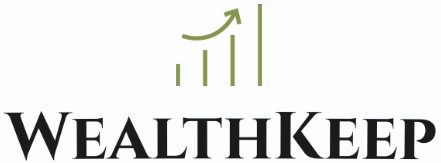Investors had a rough 2018.
The S&P 500 fell by over 5%, with some sectors and industries falling even more. A five percent drop is not catastrophic, but throughout the year it felt worse, with big swing volatility becoming a new norm. Hi-lo swings of 500 to 1000 points on the DJIA were not uncommon.
On the bond side, investors got hit as rate increases drove bond prices down. New income investors clamored for higher rates to ease their pain, and while rates rose some, the yields are still wanting for cash flow starved investors.
Enter Andy Warhol
 For those of you unfamiliar, Andy Warhol (August 6, 1928 – February 22, 1987), a Pittsburgh native born Andrew Varhola, was the controversial pop art icon whose art came to define the culture and visual arts movement of the sixties. (For an online visit to the Andy Warhol Museum, click here.)
For those of you unfamiliar, Andy Warhol (August 6, 1928 – February 22, 1987), a Pittsburgh native born Andrew Varhola, was the controversial pop art icon whose art came to define the culture and visual arts movement of the sixties. (For an online visit to the Andy Warhol Museum, click here.)
Warhol’s eclectic originals have fetched enormous prices at auction, delivering handsome returns for art investors.
Warhol’s “Self-Portrait,” a signature four-panel acrylic silkscreen depicted the pop artist wearing a trench coat and sunglasses, originally commissioned in 1963 for $1600, sold at auction for $38.44 million in 2011 at Christie’s post-war and contemporary art auction.
“So what’s this have to do with me?,” you may be asking.
So, time is money after all. Investing in Watches.
If you are an investor who is starting to explore the world of alternatives (non-financial asset classes, such as precious metals and stones, agriculture, real estate, or art, for instance) you will find that alternatives can add an important element of risk management as well as return possibilities to your portfolio. There is now a way for smaller investors to invest in art, fractionally, similar to owning stocks or bonds in ETF or mutual fund shares.
While they were not part of the Warhol Self-Portrait sale in 2011, Masterworks is a new blockchain-based investment platform, and is one of a few new investment platforms that intend to give smaller investors an opportunity to own out-of-reach, pricey art, albeit in fractional shares, with no single investor owning more than 10% of the piece, thus allowing no single investor a large or controlling share.
How it works
Masterworks purchase’s paintings at auction and transfers ownership of the art piece to shareholders, taking its management fee, which covers the administrative costs of care, storage, transportation and insurance, and, of course, their piece of the profit when the art sells at auction again in the future.
Fine art ownership for the masses
 For as little as $1000, Masterworks, offers small-sum investors the chance to buy “shares” in multi-million dollar artworks, like Warhols and Picassos! In addition to buying a small slice of art history, investors will ultimately expect a share of the profits.
For as little as $1000, Masterworks, offers small-sum investors the chance to buy “shares” in multi-million dollar artworks, like Warhols and Picassos! In addition to buying a small slice of art history, investors will ultimately expect a share of the profits.
While art investing is not for everyone, Masterworks offers a way to put a toe in the water if your personalized, objectives-based asset allocation plan calls for an alternatives piece.
MPT and the value of Diversification
Modern Portfolio Theory (MPT) stresses several key factors for successful long term investing. Central to its core philosophy is the value of diversification of asset classes, sub-asset classes and individual securities and holdings. True diversification calls for an investor to craft a portfolio of non-correlated assets, that is, assets whose prices move counter to one another (i.e., when one is up, another is down) as market forces drive price movements.
…true diversification calls for…a portfolio of non-correlated assets…
Artwork and other alternative asset classes are smart choices for a piece of your total pie as a hedge against falling financial asset prices since artwork appreciation is negatively correlated to stock price movements.
WealthKeep receives no compensation from and has no financial interest in Masterworks or any other art investment platform, but we find it an interesting and welcome addition to the investment landscape and a pretty cool way to employ blockchain technology. We will keep an eye on them for future reporting.

Money Skills: So, time is money after all. Investing in Watches.

